Motto | |||||
| Anthem | "The Books of Overthrowing Pethōou" | ||||
| Capital | Nekhatw | ||||
| Largest city | Aqqak | ||||
| Language official |
Neter Senek | ||||
| others | olimi weZulu, Irkawan, Mallan, Watembo, Luthorian | ||||
| Religion main |
82% Arkhē Mumenhes | ||||
| others | 5% Esintsundu Syncretic 4.75% Hosian •4% Tewahedo Apostolic •0.6% Bishopal •0.15% Patriarchal 4% Arkhē 2% Agnostic 1% Inkolo 0.25% Resezanaist 0.67% Other religion 0.33% Atheist | ||||
| Ethnic Groups main |
97% Hawu •26% Ibutho-Hawu •20.5% Coburan-Hawu •10% Talmorian-Hawu •10% Esinsundu-Rutanian- Hawu •8.5% Watembo-Hawu •6.5% Ibutho-Luthori-Hawu •6% Ikpi-Hawu •4% Beta Yishalem-Hawu •2.5% Kuragao-Hawu •2% Esinsundu-Malivian- Hawu •2% Talmo-Likatonian-Hawu | ||||
| others | 0.79% Nomadic Ikradonians 0.63% Canrillaise 0.49% Mashacara 0.40% Luthorian 0.22% Rajutti 0.19% Gao-Showan 0.15% Majatran 0.13% Other ethnicity | ||||
| Demonym | Hawu | ||||
| Government | Democratic Monarchy | ||||
| King | King Nkosinathi | ||||
President |
Wilburn Battersby | ||||
| Legislature | The Gathering of the Nation | ||||
| Area | 904,800 km² | ||||
| Population | 113,382,322 (4743 estimate) | ||||
| GDP Total: |
3,310,344,998,360 IKD (4416) | ||||
| per capita | 33,157 IKD (4416) | ||||
| Established | 4045 (Current kingdom) | ||||
| Currency | Ikradonian Drahme (IKD) | ||||
| Time Zone | GMT 0 | ||||
| summer | GMT +1 | ||||
| Drives on the | Left | ||||
| Calling Code | +10 | ||||
| Internet TLD | .hwm | ||||
| Organizations | World Congress Artanian Union | ||||
Ikradon, officially the Free Kingdom of Hawu Mumenhes (Neter Senek: ![]() , transl. Hawu Mumenhes Nesyet Wosten), is a country in Central Artania.
, transl. Hawu Mumenhes Nesyet Wosten), is a country in Central Artania.
At 349,345 square miles (904,800 sq km) it is the world's 41st largest nation in terms of land mass. It is one of Terra's most ethnically diverse and multicultural nations, the product of large-scale immigration from many countries. The geography and climate are comparable to other Artanian nations and the country is home to a variety of wildlife and an abundance of mineral resources.
The Ancient Ikradonian Empire governed the territory for much of prehistory, with Ibutho colonists from Dovani arriving later. Hawu Mumenhes emerged from the destruction of Ibutho. Recurrent destabilization led by usually foreign-backed republican and Metzist movements led to the economic collapse and mass depopulation of Ibutho from the 40th to 41st centuries. Sizwe Ihejerika was elected president in October 4039 and called a constitutional convention to determine Ibutho's future. Delegates from Ukusaelsha Ibutho and The Federationist Party, Ibutho's major political parties at the time, unanimously adopted a Constitutional Framework outlining a newly-founded democratic republic that mixed a strong presidential system with elements of constitutional monarchy. The Hawu Mumenhes Constitution was passed by the Ibutho legislature in 4045 with only the third party People's Party objecting. The Constitution divides power between the legislatively-appointed president and an elected monarch and includes many checks and balances in the adversarial system designed to guarantee fundamental civil liberties while empowering a strong central government.
The Federationist-affiliated Fourth Week Group embarked on a vigorous corporate and industrial expansion and revitalization program throughout the country beginning in the early 41st century. This involved re-industrializing mineral extraction, establishing manufacturing, retail, and finance companies to service the consumer and business sectors, and gradually recruiting foreign professionals to immigrate to the country. By the mid 4040s, Hawu's population numbered more than 99 million, and its economy, driven in large part by the finance and technology sectors, began to soar. The country's military power remains untested. However the major political parties increasingly coalesce around an interventionist agenda designed to establish the country as a major power.
Hawu Mumenhes is a high development country and has one of the world's largest economies by Objective Ranking GDP, benefiting from abundance of natural resources and high worker productivity. Moreover, it ranks among the top 10 in the world in several measures of economic well-being, including GDP per capita. The Hawu economy is considered to be service sector-oriented and a leader in scientific and technological innovation.
Name[]
According to official Legendary History, the country was named ![]() (ḥꜥȝsu Mnhs) by its first Pharaoh, Remptahhu, a Coburan prince and devout priest of Mnhs, one of the Ancient Irkawan religion's many polytheistic Gods. In the legend, a delegation of Ibutho dignitaries traveled to Remptahhu's Coburan Arkhē temple and witnessed the prince perform a ritual service to the God. Impressed by wonders and bountiful living in the temple's surrounding Sharba, all attributed to the God by Coburan locals, the Ibutho dignitaries are said to have requested that a replica of the God's statue be made and that Prince Remptahhu escort the replica to Ibutho territory to be the newly-planned country's patron God. Prince Remptahhu is said to have one-upped the foreign delegation by declaring that he would have to be declared king of the new country and that it would have to be named ḥꜥȝsu Mnhs in exchange for the replica.
(ḥꜥȝsu Mnhs) by its first Pharaoh, Remptahhu, a Coburan prince and devout priest of Mnhs, one of the Ancient Irkawan religion's many polytheistic Gods. In the legend, a delegation of Ibutho dignitaries traveled to Remptahhu's Coburan Arkhē temple and witnessed the prince perform a ritual service to the God. Impressed by wonders and bountiful living in the temple's surrounding Sharba, all attributed to the God by Coburan locals, the Ibutho dignitaries are said to have requested that a replica of the God's statue be made and that Prince Remptahhu escort the replica to Ibutho territory to be the newly-planned country's patron God. Prince Remptahhu is said to have one-upped the foreign delegation by declaring that he would have to be declared king of the new country and that it would have to be named ḥꜥȝsu Mnhs in exchange for the replica.
In reality, the 4040 Constitutional Convention had already adopted resolutions naming the country Hawu Mumenhes and designating a descendant of the Baroness of uMnotho and King Kharakhte as the preferred hereditary monarch. Hawu Mumenhes is a Selucianized transliteration of ![]() which means, "the body of consciousness". Mumenhes is a creator God in Arkhē theology and his name literally means "consciousness," owing to his role as the hermaphroditic consciousness which emerged from the primordial waters to create the universe by mating with himself. The Ibutho Royal Family had been repeatedly exiled to Cobura by republican governments, making the Majatran nation a popular destination for Ibutho emigrants during the economic depressions. The cross-pollinating nature of Ibutho-Coburan relations produced an increasing number of Arkhē adherents amongst Ibutho expatriates including several members of the deposed royal family. By the 4030s, Ibutho repatriates returning as Fourth Week Group corporate recruits disproportionately followed the Ancient Irkawan religion, though with many notable Inkoloizations. Constitutional Convention delegates therefore designated the Arkhē religion as the new country's predominant faith and formalized Mumenhes -- the most popular Arkhē God amongst the immigrants -- as the country's high God. Convention delegates named the religion "Arkhē Mumenhes" to emphasize the hybridized faith's unique theological development. "Arkhē Mumenhes" means "the foundation of consciousness," or "the foundation of Mumenhes," indicating that the Arkhē religion (and it's ancestral home, Cobura) is the "foundation" of the Arkhē Mumenhes faith and it's high God. Relatedly, "Hawu Mumenhes" references Arkhē Mumenhes theology and designates adherents of the faith as the "body" (Hawu) of God (Mumenhes).
which means, "the body of consciousness". Mumenhes is a creator God in Arkhē theology and his name literally means "consciousness," owing to his role as the hermaphroditic consciousness which emerged from the primordial waters to create the universe by mating with himself. The Ibutho Royal Family had been repeatedly exiled to Cobura by republican governments, making the Majatran nation a popular destination for Ibutho emigrants during the economic depressions. The cross-pollinating nature of Ibutho-Coburan relations produced an increasing number of Arkhē adherents amongst Ibutho expatriates including several members of the deposed royal family. By the 4030s, Ibutho repatriates returning as Fourth Week Group corporate recruits disproportionately followed the Ancient Irkawan religion, though with many notable Inkoloizations. Constitutional Convention delegates therefore designated the Arkhē religion as the new country's predominant faith and formalized Mumenhes -- the most popular Arkhē God amongst the immigrants -- as the country's high God. Convention delegates named the religion "Arkhē Mumenhes" to emphasize the hybridized faith's unique theological development. "Arkhē Mumenhes" means "the foundation of consciousness," or "the foundation of Mumenhes," indicating that the Arkhē religion (and it's ancestral home, Cobura) is the "foundation" of the Arkhē Mumenhes faith and it's high God. Relatedly, "Hawu Mumenhes" references Arkhē Mumenhes theology and designates adherents of the faith as the "body" (Hawu) of God (Mumenhes).
In addition to "Hawu Mumenhes," the term can also be Selucianized as "Hw Mnhs," and can be alternatively transliterated as ḥꜥȝsu Mnhs or written in the Ancient Irkawan hieroglyphics. All four renderings are common in Hawu.
The short form "Hawu" is also common, and is used to refer to both citizens of the country and the country as a whole. In the former usage the term is both singular and plural. Other common short forms are "HW," "H.M.," "HM," and "HwM." Colloquial names include "H & M" and "the Body."
The official long-form (Selucianized) name of the country is, "The Free Kingdom of Hawu Mumenhes." "Free Kingdom" refers to the country's system of selecting its constitutional monarch. An alternative long-form considered by the Constitutional Convention was, "The Democratic Monarchy of Hawu Mumenhes." However the name was rejected on grounds that it would be too difficult to back-translate into Neter Senek (Ancient Irkawan Hieroglyphics).
History[]
Pre-History[]
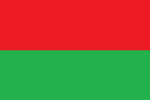
Battle banner of the pre-historic Tribal Kingdom of Ichredone
Hawu Mumenhes's predecessor state was known as Ibutho. Thought by many anthropologists to originate in Dovani, Ibutho settlers migrated to the eastern coast of Artania sometime prior to recorded history. The settlers lived quietly amongst the Ancient Ikradonians until a series of territorial conflicts led to the collapse of the Ikradonian government following several crippling defeats at the hands of the Ibutho settlers. On the ashes of Ancient Ikradon, the Ibutho settlers organized themselves into a loose confederation of eight kingdoms. The Ibutho Confederation was isolationist and largely unknown to outsiders until Luthori, Dundorfian, and Rutanian explorers began crossing into its borders sometime in the 3rd or 4th millennium. The Luthori Empire invaded Ibutho soon after with colonialist designs aimed largely at confiscation of Ibutho mineral wealth.
Ibutho iZulu[]
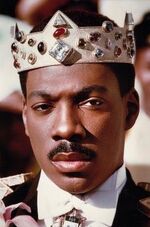
Andile III's short reign came to symbolize the opulence of the Ibutho Golden Age
Through diplomacy and patronage, King Shabangu the Younger of Southern Kwalakubo, one of the eight Ibutho confederated kingdoms, drew the confederation into a more centralized state beginning in the mid 3500s. The unitary government better equipped the confederation to push back the Luthori occupiers who were finally expelled in the late 36th century.

The emblem of the Tiger's Head, the Ibutho King's personal military command
After decades of blundering foreign policy failures, King Mlungisi the Orderer sparked a religious, literary, and political renaissance leading to a 200-year Golden Age during which the kingdom was renamed "The Army of Heaven" and established enduring and influential, if narrow, relations abroad. The Golden Age was ended in the mid 3800s by the Mopoho Interregnum during which a foreign-backed insurrectionist force deposed the reclusive King Bathandwa, launching the then-prosperous country into 150 years of regression. Alternating military and Metzist governments lead the country through severe successive economic depressions and a radical dismantling of Golden Age values.

The Prince Bathandwa sided with the Mopoho Insurgency against his father the king
Bathandwa's nephew, King Saksoure III of Cobura, attempted a renaissance for much of the 40th century. The revitalization effort, however, proved too great an administrative hurdle for the foreign king, who was himself deposed from the Ibutho throne in 3971.

Saksoure III was the last legitimate monarch of Ibutho
Large-scale emigration, already apace during the Mopoho Interregnum, increased torrentially over the next half century's repetition of foreign-backed and Metzist policies, leaving the country at one quarter it's usual population by the 4020s. A foreign-backed government had planned the dismantlement of Ibutho throughout the 4020s before that government itself collapsed several years later. In 4039, President Ihejirika was elected to lead the few remaining citizens of Ibutho, whose population had by then dwindled to a mere 2 million.
Fourth Week Group[]
The territory that became Hawu Mumenhes was repopulated primarily through hiring and

Several Fourth Week Group members following a monthly meeting
salary incentives offered by Fourth Week Group and their extensive network of business colleagues and controlled companies who partnered together to redesign and reconstruct the territory's infrastructure and economy. As a result of this unique peopling, Hawu tend to be business minded, fiercely capitalist, and part of the professional class. Fourth Week Group members were in the main patriotic and nationalist. They therefore focused their recruitment on Esinsundu countries, provinces, and neighborhoods when hiring for the new Hawu economy. Many of the targeted Esinsundu jurisdictions had faced down gross

Infrastructure and Transport Minister Yacine Diarra Hakim, a member of Fourth Week Group, pictured here in a panel discussion with an unidentified Fourth Week Group member
and/or repeated war crimes, barbarism, torture, and even genocide committed by various Artanian, Gao-Showan, and Majatran culprits. This historical memory has contributed to widespread sentiments of militarism, nationalism, and interventionism among the Hawu, especially when Ezinsundu are involved or Esinsundu interests are at stake.
Founding[]
Hawu Mumenhes was founded in 4043 based on a plan by Fourth Week Group, a transcontinental members-only association of Esinsundu executives who sought to build a new country in the former territory of Ibutho after mass depopulation in that country. Fourth Week Group aimed to create a country that could guarantee freedom, prosperity, and security for its citizens and the world. In 4039, Fourth Week Group tasked Esinsundu-Rutanian insurance executive Hermelinda Shelby with the creation of an Ibutho political party to implement the Group's objectives.
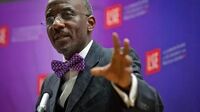
President Sizwe Ihejerika shepherded the transition from Ibutho to Hawu Mumenhes. He was Ibutho's last head of state.
Shortly after its founding, the party, called The Federationists, began urging Ibutho President Sizwe Ihejirika to call a Constitutional Convention on the grounds that Ibutho had been too damaged by foreign infiltrators to be salvaged. President Ihejirika granted the Federationist request and ordered drafting for the Constitution of a new state to begin in the summer of 4040. Attendees cloistered themselves for three years, with debates hinging primarily on the structure of the new state and the character and identity of the country. Attendees emerged in June 4043, presenting President Ihejirika with a Constitutional Framework for a popularly-elected monarchy administered by a federal government oriented to militarism and neocolonialist expansion.
Contemporary Hawu[]
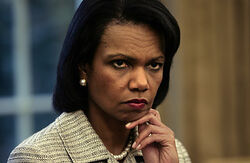
Hermelinda Shelby, leader of the ruling party Ity ꜣḥwt xꜣdt, was elected Hawu Mumenhes's first president
The first election under the country's new constitution was held in November 4045. Electoral observers' reports called the election, "universally free and fair, with open robust public debate, knowledgeable and energetic press media, a well-informed electorate, with widely-known and understood electoral rules and non-interference from government or political opponents." The election results were led by the two major parties, Ity ꜣḥwt xꜣdt and Raaper iny Mumenhes, with Ity ꜣḥwt xꜣdt securing 82% of seats in the national legislature and Raaper iny Mumenhes candidate for Queen winning a lifetime term.

HM Queen Ribrete was elected Head of State in Hawu Mumenhes's first election in 4045
Minor parties Xadtu nit zas Citioru and Smate iny abewtyru giqidio did not garner enough support to gain seats in the legislature and neither of them nominated candidates for Queen. Expecting a strong win, Ity ꜣḥwt xꜣdt Vice Chairman Percy Merymumenhes Sibanyoni initiated cabinet negotiations with rival parties in July 4045, four months before the election.
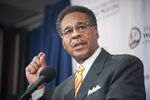
Rmṯ Sḥsi President Pro-Tempore Percy Sibanyoni
According to press reports, Sibanyoni told other parties that Ity ꜣḥwt xꜣdt was likely to win overwhelmingly and that the party planned to put forward its Chairwoman, Hermelinda Shelby, as its presidential candidate. Sibanyoni laid out Shelby's governing plan before querying negotiating partners about what roles they'd like to play in a Shelby administration. Negotiations are said to be ongoing, but media reporters have tipped prominent Raaper iny Mumenhes members as strong contenders for the country's first Minister of Justice and possibly several of the social services ministries. No reports have strongly tipped Smate iny abewtyru giqidio as securing any ministries, but Shelby is thought to be eying a member from that party as Foreign Affairs Minister. Xadtu nit zas Citioru disbanded soon after its poor election showing.
Georgraphy, Climate, and Environment[]
The land area of the Hawu Mumenes is 349,345 square miles (904,800 sq km). Aqak, the only sepat (province) with an extended coastline, is the largest at 88,957 square miles (230,400 sq. km.). Arnak, with an inlet to the Mad Dog Sea, is the smallest sepat at 54,903 square miles (142,200 sq. km.).
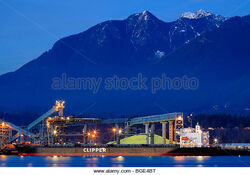
A shipping port on Aqak coast. The Gaxe Dehnet mountain range is visible in the background.
Hawu Mumenhes is the world's 41st largest nation by total area, ranking behind Rutania and just above Dundorf, both of which it borders.
The coastal plain of the Aqak seaboard quickly gives way to steep mountain ranges inland. The Gaxe Dehnet mountains dominate Arnak sepat and run north through Dudorf and Kundrati. The River Ode, Artania's only navigable river, is formed by Gaxe Dehnet's melting peaks and feeds into the Mad Dog Sea. Saqqad sepat is dominated by foothills though its neighboring sepat to the north, Benna, enjoys large open plains.
The country's climate is mostly humid continental, though temperatures reach subarctic levels at mountainous peaks.
Wildlife[]

Two Alpa Ibex in a mating battle atop the Gaxe Dehnet mountains
Hawu's mountain regions have peculiar fauna with many instances of endemism. The Alpa desman is found only in some of the streams of the northern slopes. Alpa brook salamanders also live in streams and lakes located at high altitudes. A notable incidence of blind insects occur in the caverns of the Gaxe Dehnet. Common animals include the Alpia ibex, the Alpa marmot, the Otxoa owl, and the ptarmigan. Gaxe Dehnet houses Artania's largest populations of brown bears, wolves, lynxes, and chamois. Golden jackals, voles, ground squirrels, desman, and other small mammals characterize the Benna plains.
Demographics[]
Population[]
Since re-population efforts of the early 5th millennium, Hawu Mumenhes's population is stable, ranging from ca. 99.8 million to 99.9 million. The nation is generally amongst the 10 most populous nations in the world and has often reached the top three. The birth rate is below replacement level at 1.86 children per woman. However, foreign born immigration has caused the Hawu population to remain stable. Nearly 85% of the population was foreign born at the country's founding in 4045.
Cobura has been the leading source of new residents since the 3927 Saksoure Restoration. Talmoria has been in the top four for nearly 400 years. As of 4047, approximately three million residents are illegal immigrants, primarily originating from Canrillaişe, Majatran, Mashacara, and Utembo areas. 96% of all immigrants are Esinsundu, ca. 1% are Artanian, ca. 0.5% are Mashacara, ca. 0.25% are Gao-Showan, and ca. 0.15% are Majatran.
According to a survey conducted by the Jackson iny Hawu Institute, roughly 3.4% of the adult population identify as homosexual, bisexual, or transgender. The highest proportion came from Aqak at 10%.

An Ikradonian nomad tends to his herd
In 4043, the Hawu Mumenhes population included an estimated 810,000 Ikradonian Nomads who constitute the country's aboriginal population. The census counted 130,000 people of "some other nationality" who were "unable to identify with any" of its official Country or Polity of Origin categories.
About 82% of Hawu live in urban or suburban areas, and about 75% of those reside in cities with populations over 5 million. Hawu Mumenhes has several cities known as mega-regions, the largest being Aqqak megalopolis followed by the Neba megalopolis. In 4045, 165 incorporated places had populations over 100,000, nine cities had more than one million residents, and three global cities had over ten million (Aqak, Buhis, and Neba). Of the 50 fastest-growing metropolitan areas, 13 are in Saisyut and Saqqad sepatru.
Language[]

A hazard sign written in Selucianized Neter Senek. It reads, 'Caution! Traffic Ahead'

A middle school student's class poetry assignment. It reads, 'You will pass eternity happily and in praises of the God who is in you. Your heart will be with you. It will never forsake you.'
Neter Senek is the official language. In 4043, about 87 million of the population aged five years and older spoke only Neter Senek at home. Olimi weZulu, spoken by 5% of the population at home, is the second most common language. Coburan, Watembo, and Luthori dialects are the most common minor languages.
Many jurisdictions with large numbers of non-Neter speakers publish government materials, especially voting information, in the most commonly spoken local languages. Several cities grant official recognition to widely-spoken local languages alongside Neter Senek.
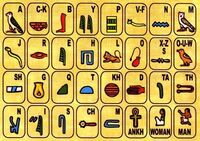
Neter Senek-Luthori alphabet flash card used by Neter Senek-as-a-second-language elementary students
The most widely taught foreign languages at all educational levels in Hawu Mumenhes are Olimi weZulu, Irkawan, Mallan, Watembo, and Luthori.
Religion[]
Arkhē Mumenhes is the most commonly-practiced religion in Hawu Mumenhes. In a 4045 survey, 72% of Hawu said religion played a "very important role" in their lives, a higher percentage than many other wealthy countries. In a 4043 Jackson iny Hawu poll, 48% of Hawu said they attended religious services several times per month. Ir-religion is very low compared to other wealthy nations at less than 3%.

Fairgrounds at a children's temple retreat in Saisyut. Several Gaxeimewtru ("Holy Beings") are projected across the night sky.
Nearly 85% of Hawu practice Arkhē Mumenhes. The most-practiced minor religions include Inkolo Esintsundu Sizwe Syncretism, unreformed Arkhē, Coburan Apostolic Tewahedo Hosianism, and unreformed Inkolo.
Very devout practice of Arkhē Mumenhes is a significant part of the culture in Saisyut. Ritual attendance is generally higher there than in other sepatru. Attendance tends to be lowest in Aqak.
Government and Politics[]
Hawu Mumenhes is a democratic republic and constitutional monarchy in which the broad powers of the legislatively-appointed president are tempered by a popularly-elected monarchy. The government is regulated by a system of checks and balances defined by the Hawu Mumenhes Constitution which serves as the country's supreme and fundamental law. Hawu is rated highly in democracy rankings and has low perceived corruption according to studies.
Hawu Mumenhes maintains a federal system whereby citizens are usually subject to three levels of government: national, sepat, and local. In almost all cases, executive officials are elected by a multi-round vote, progressively winnowing large fields to garner a majority (>50%) verdict. Legislative officials are usually elected by pluralities however.
The national government is composed of four branches:
- Monarchical: The Elected Monarch is head of state, formally appoints the national executive government and other senior officials, can veto legislative acts, and can grant titles of nobility
- Executive: The President is head of government, directs all executive and regulatory business of the state, is supported by a 12-member Cabinet which manages the national government's various executive agencies, and can depose the elected monarch under certain circumstances.
- Legislative: The unicameral Rmṯ Sḥsi has sole law-making authority at the national level (though many monarchical, presidential, and ministerial orders have the force of law), and approves cabinet appointments, treaties, revenue bills, and expenditure budgets
- Judicial: National Courts settle public and private disputes, sentence violators of the law to civil and criminal sanctions, interpret and apply laws, and review laws for conformity to the Constitution; the national courts system is under supervision of the Minister of Justice who enjoys the power to appoint judges and government attorneys
Monarchical[]
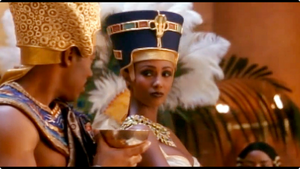
Queen Ribrete and Pharaoh Remptahhu during their coronation. Their Majesties are Hawu Mumenhes's first elected and hereditary monarchs respectively. They married following Queen Ribrete's election in late 4045.
The monarch is elected by a national vote of universal suffrage. The monarch serves for life and generally becomes the ritual spouse of the hereditary pharaoh after election. The President can legally depose the monarch under certain circumstances, though the monarch can demand a special election to test public support for the deposition. When a monarch is involuntarily deposed, a special election is held wherein all political parties can nominate any adult as monarch. The successful candidate's party enjoys the exclusive right to appoint all monarchical successors unless and until the party voluntarily renounces its appointment power or is forced to by the President. An open election is held following a renunciation to determine which political party should control the monarchy.
The Executive[]
After each national election, the leader of the largest party or largest coalition usually nominates himself or herself as President of Hawu Mumenhes and 12 other persons as cabinet ministers.
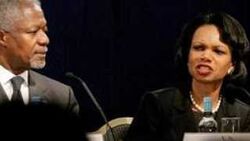
President Shelby (r) and Finance Minister Dalingcebo Mathebula-Johnson (l) address the media following a cabinet meeting
The nomination is sent to the elected monarch who decides whether to appoint the nominees. The monarch's appointment bill is then sent to the Rmṯ Sḥsi who choose whether to approve or reject the appointments. The President and cabinet ministers do not have term limits but can be replaced by monarchical appointment or fired by the President with monarchical and legislative approval.
Legislative[]
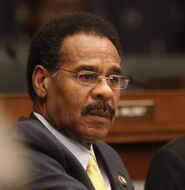
Rmṯ Sḥsi President Pro-Tempore Percy Sibanyoni during a legislative committee hearing. Sibanyoni was appointed to the lead the country's law-making body by Pres. Shelby who under the Constitution is the legislature's nominal chairperson.
The legislative body of Hawy Mumenhes is the Rmṯ Sḥsi (Luthorian: The Gathering of the Nation). At the country's founding, the Rmṯ Sḥsi had 400 members divided into five groups of 80 with each group representing a sepat for a 3 and 1/2 year term. The body was expanded to 750 members in 4048 to ensure representation for smaller political parties. The 4048 Act also reallocated Rmṯ Sḥsi seats based on sepat population. As a result, some sepatru have slightly more representation in the national legislature than others in recent years. In the 4074 election for instance, the Saqqad sepat sent 151 members to the Rmṯ Sḥsi, while Benna sent only 149.
Judicial[]
The numerical makeup, membership, and term lengths of judges in the national court system are determined by the Minister of Justice subject to approval by the President. The national supreme court is the Great Judgement Court in the Temple of Taphmēi of Nekhatw.
Sepatru and Local Governments[]
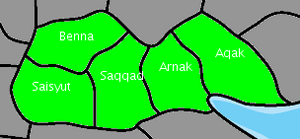
The five Sepatru of Hawu Mumenhes
The structure of sepat and local governments are determined by the Rmṯ Sḥsi.
Political Parties[]
Hawu Mumenhes operated under a two-party system following the first elections in 4045. The major parties were the Raaper iny Mumenhes and the Ity ꜣḥwt xꜣdt, both founded in 4039. Two minor third parties competed in the 4045 elections. A prominent member of Smate iny abewtyru giqidio was appointed Foreign Affairs Minister following the election while the other third party, Xadtu nit zas Citioru, disbanded.
Since their foundings, Ity ꜣḥwt xꜣdt has staked out right-leaning republican positions while Raaper iny Mumenhes has staked out center-left monarchist positions. Ity ꜣḥwt xꜣdt's base is considered the cosmopolitan coastal sepatru of Arnak and Aqak. Raaper iny Mumenhes's base of support tends to be found in the industrial sepatru of Benna and Saqqad. The religious and monarchical capital of Saisyut has tended to give strong though declining support to Ity ꜣḥwt xꜣdt.
Following the 4045 elections, Ity ꜣḥwt xꜣdt leader Hermelinda Shelby became the country's first President. President Shelby appointed a tri-partisan cabinet with prominent ministries going to Raaper iny Mumenhes and Smate iny abewtyru giqidio, though the cabinet was dominated by Ity ꜣḥwt xꜣdt appointees. The President chairs the Rmṯ Sḥsi, though she appointed Ity ꜣḥwt xꜣdt senior leader Percy Sibanyoni as Rmṯ Sḥsi President Pro-Tempore to run the legislature's day-to-day business.
During the 1st Sḥsi of 4045, the legislature was controlled by the Ity Ahwt xAdt which held 329 seats while the minority Raaper iny Mumenhes held 71 seats. The third party Smate iny abewtyru giqidio had no voting representatives in the legislature, though delegates from that party were permitted to propose legislation and participate in debates.
Foreign Relations[]
During the 4045 campaign, President Shelby outlined an ambitious foreign policy agenda. In addition to establishing formal diplomatic relations with nearly all foreign governments, Shelby sought to build a strong network of coalitions to support Hawu initiatives abroad while deepening relations with Ibutho's closest allies. However, Shelby sought to specifically withhold diplomatic recognition from government hostile to Hawu interests.
Hawu Mumenhes maintain's a close relationship with Cobura due to cultural ties and Shelby has sought to develop a protective stance regarding traditional ally Talmoria including covert support to opposition and insurgent groups. Shelby established a policy of sceptism and Hawu First independence regarding intergovernmental organizations like the Artanian Union, though she did quietly advocate the establishment of a coalition led by Hawu Mumenhes and Cobura. At the start of the Shelby administration, Hawu Mumenhes spent more than $10 billion on official development assistance, amongst the highest in the world, though only about a third of Hawu GDP. By contrast, private giving by Hawu citizens for foreign causes averages generous 3% of income per capita.
Government Finance[]
Sales and household and corporate income taxes are levied in Hawu Mumenhes at the national, sepat, and local government levels. Hawu governments also finance operations through fees, foreign development lending, and a small number of government corporations. During the 4045 election campaign, President Shelby advocated capping tax revenue at 8% of GDP. The national government's primary tax base is household income taxes, though Essential Goods sales tax does yield relatively signifiant revenue. Corporate and Luxury Goods taxes are comparatively small tax bases, though commentators advocate their use as redistribution, inflation, and money supply tools.
Hawu taxation was predicted to be regressive but low under the Shelby administration. President Shelby advocated a 10% flat tax on $10k+ earners during the 4045 campaign. She maintained a policy against corporate and sales taxes.
Sepatru and local governments tend to have wive sources of revenue than the national government which is constrained by international budgeting norms.
During fiscal year 4046, the national government spent $617 billion. Major categories of spending included corporate subsidies (24% of spending), defence (19%), followed by education, infrastucture, and finance (8% each) and healthcare and social services (6%).
The national government carried a structural budget deficit of ca. 10% of GDP in fiscal year 4046.
Military[]
The President maintains full mission, operational, and personnel control over the armed forces through oversight of the Minister of Defence and the Chiefs of Forces, all of whom report to the President. The Ministry of Defence administers the armed forces which includes the Army, Navy, Air Force, and Special Forces Command. During the 4045 election campaign, President Shelby revealed plans to target 175,000 armed forces personnel, including ca. 100,000 active duty soldiers. The Hawu Defence Ministry employed about 50,000 civilian personnel in 4045, not including defence contractors.
President Shelby advocated a voluntary professional military with possible conscription during wartime. Shelby targeted a hardware composition supporting rapid deployment via transport transport aircraft and several aircraft carriers. During 4045 pre-election cabinet negotiations, Shelby outlined a policy of a network of bases and facilities abroad staffed by rotating deployments of active duty personnel.
The Hawu Mumenhes fiscal year 4046 military budget was $120 billion, about 3.5% of GDP. Defence's share of Hawu Mumenhes spending was generally expected to increase in following years as the Shelby administration ramped up its expansion program.
Economy[]
Hawu Mumenhes has a capitalist mixed economy which is fueled by abundant natural resources and high productivity. Hawu's nominal GDP was estimated to be $3.4 trillion in 4045.
Hawu Mumenhes is major importer and exporter of finished goods and raw materials. In 4045, oil was the largest import commodity while industrial equipment, consumer electronics, and jewelry accessories were amogst the major exports.
In 4045, the private sector constituted about 84% of the country's economy with government spending accounting for about 15%. While its economy has reached a postindustrial level of development and its service sector constitutes more than two-thirdds of GDP, Hawu Mumenhes remains an industrial power. The leading industry by revenue is wholesale and retail trade and manufacturing by income.
Chemical products are the leading manufacturing field. Hawu produces electrical and nuclear energy as well as liquid natural gas, sulfur, phosphates, and salt. The domestic mining industry extracts signifiant quatities of coal, beryllium, copper, lead, magnesium, zinc, and titanium.
Agriculture accounts for a negligible proportion of GDP, but Hawu Mumenhes is a major food services consumer and exporter. The country is a leading developer and grower of biotech crops, GMOs, and other synthetic foods.
Consumer spending accounted for more than 70% of the Hawu economy in 4045. The Hawu Mumenhes labor force is stable at about 62.5 million. Studies have ranked Hawu Mumenhes highly on ease of hiring and firing workers, market competitiveness, ease of doing business, and worker productivity per hour.
Education[]
Hawu public education is operated by sepat and local governments with oversight by the national Ministry of Education and Culture. Private schools operate according to national and sepat laws. Children are required to attend school from the age of five or six through adulthood. Hawu Mumenhes has many competitive colleges and universities. About 70% of Hawu adults have attended college and about 40% of adults over 25 hold bachelors degrees while about 12% hold graduate degrees. Literacy is in the 99th percentile.
Culture[]
Hawu Mumenhes is home to many cultures, nationalities, and ethnicities. Aside from the aboriginal Ikradonians and the long-settled Ibutho-Hawu, nearly all Hawu families immigrated within recent centuries. Hawu culture is an Esinsundu culture largely derived from the traditions of Esinsundu immigrants and settlers but with major influences from many other sources.
Hawu are generally characterized by strong business mindedness, fierce capitalist leanings, and professionalism. Hawu values are typified by penchants for civil liberty, public decency, entrepreneurialism, rule of law, propriety, and self-government. The "Hawu Miracle", a perception that Hawu Mumenhes enjoys high social mobility and wealth, plays a key role in attracting immigrants.
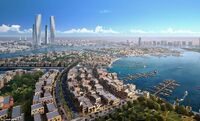
The outskirts of downtown Zawty, a city in Benna sepat situated on the River Ode
Popular, sacred, and high culture are heavily influenced by Ancient Irkawan and Ancient Domalen ideals, Ibutho Golden Age values, and Artanian trends. Hawu musics tend to be Esinsundu in idiom with significant Artanian features. Since the Saksoure Restoration, neo-Irkawan fashions have been popularized, a trend that has increased since the country's founding in 4045, though workplace fashions tend towards Artanian trends with significant incidence of Talmorian styles especially on formal occasions. Architecture is overwhelmingly modernist and futurist with frequent neo-Irkawan elements.

Mumenhes Tower, an obelisk and office building in the Gaxe Dehnet valley of Saqqad sepat. The building is dedicated to the country's patron God Mumenhes and completed construction in 4037.
Literature and visual arts also tend towards Ancient Irkawan classicism. The Hawu Mumenhes film industry is large and dynamic, fueled by the domestic consumer market and high foreign export demand. Athletics are central to primary and secondary school curricula, and Hawu athletes are record setters in several disciplines, especially sprinting, long-distance running, Rutanian football, basketball, boxing, gymnastics, and figure skating. Hawu dance culture is vibrant and popular influenced heavily by Talmorian, Mallan, and Watembo styles.


